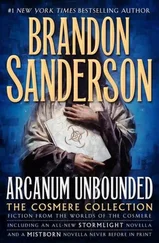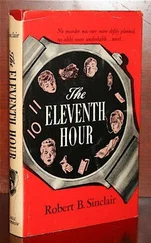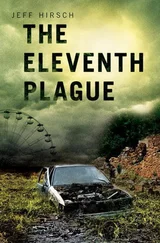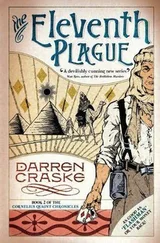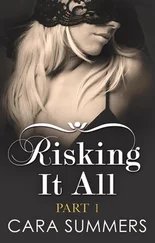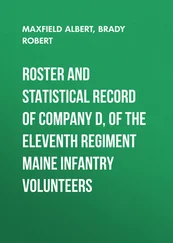Anthony Summers - The Eleventh Day
Здесь есть возможность читать онлайн «Anthony Summers - The Eleventh Day» весь текст электронной книги совершенно бесплатно (целиком полную версию без сокращений). В некоторых случаях можно слушать аудио, скачать через торрент в формате fb2 и присутствует краткое содержание. Жанр: Старинная литература, на английском языке. Описание произведения, (предисловие) а так же отзывы посетителей доступны на портале библиотеки ЛибКат.
- Название:The Eleventh Day
- Автор:
- Жанр:
- Год:неизвестен
- ISBN:нет данных
- Рейтинг книги:3 / 5. Голосов: 1
-
Избранное:Добавить в избранное
- Отзывы:
-
Ваша оценка:
- 60
- 1
- 2
- 3
- 4
- 5
The Eleventh Day: краткое содержание, описание и аннотация
Предлагаем к чтению аннотацию, описание, краткое содержание или предисловие (зависит от того, что написал сам автор книги «The Eleventh Day»). Если вы не нашли необходимую информацию о книге — напишите в комментариях, мы постараемся отыскать её.
The Eleventh Day — читать онлайн бесплатно полную книгу (весь текст) целиком
Ниже представлен текст книги, разбитый по страницам. Система сохранения места последней прочитанной страницы, позволяет с удобством читать онлайн бесплатно книгу «The Eleventh Day», без необходимости каждый раз заново искать на чём Вы остановились. Поставьте закладку, и сможете в любой момент перейти на страницу, на которой закончили чтение.
Интервал:
Закладка:
Former Air Force Lieutenant Colonel Karen Kwiatkowski, who was at the Pentagon when it was hit on 9/11, later went public with a lengthy essay expressing her suspicions. “There was a dearth of visible debris on the relatively unmarked lawn, where I stood only minutes after the impact,” she wrote. “There was no sign of the kind of damage to the Pentagon structure one would expect from the impact of a large airliner.… It was, however, exactly what one would expect if a missile had struck the Pentagon.”
From French author Thierry Meyssan to Lieutenant Colonel Kwiatkowski, that is the notion that has proved durable among the doubters. The Pentagon was hit not by an airliner but by a missile.
The perceived Pentagon mysteries have given the skeptics free rein. A group calling itself Citizen Investigation Team claimed in 2010 to have “proof” that “the plane that was seen flying low over Arlington on 9/11/01 did not in fact hit the Pentagon.” Rather, it pulled up and flew over it at the last moment—all part, the authors would have us believe, of a “skilfully executed deception.”
Only a tiny community of believers, perhaps, credit such bizarre hypotheses So influential have the skeptics proven, however, above all but not only thanks to the Internet, that many people are at least somewhat hooked.
The authors’ contacts during the more than four years of work on this book—including both professional and social conversations with hundreds of people—seemed to confirm that many citizens, and not only young people, doubt that they have been given the full picture of what occurred on 9/11.
Such widespread doubt demands corroboration based on solid evidence—or rebuttal.
ELEVEN
THERE HAVE BEEN THREE MAIN OFFICIAL REPORTS ON THE NEW YORK collapses. First, the World Trade Center Building Performance Study, compiled in 2002 by the Federal Emergency Management Agency, the Structural Engineering Institute of the American Society of Civil Engineers, and other bodies. Second, there was the far more thorough—248 pages coupled to forty-two companion reports—2005 report by the National Institute of Standards and Technology (NIST). There is also the institute’s eighty-eight-page report on the collapse of Trade Center Building 7, issued in 2008.
More than two hundred technical specialists, eighty-five from NIST and the others from the private sector and the academic world, worked on the institute’s report on the Trade Center. Its conclusion as to why the towers collapsed in essence differed from FEMA’s earlier finding only in the detail of its analysis.
The impact of the planes, NIST’s experts said, severed steel support columns and dislodged fireproofing—a vital factor—and started fires that reached temperatures as high as 1,000 degrees Celsius. The intense heat had the effect of weakening floors to the point where they sagged and pulled inward until outer columns—on the south face of the North Tower and the east face of the South Tower—in turn bowed inward.
That is the process, according to the NIST, that led the towers to collapse. The institute found “no corroborating evidence” for theories that the towers were brought down by controlled demolition using explosives planted in advance. It said that even the perception that the towers “pancaked,” as a cursory look at video footage might suggest—and as is associated with films of demolition using explosives—is inaccurate. NIST’s reading of the evidence, moreover, is that there was no failure of the floors—falling down one upon another one by one—but rather that the inward bowing, as described in the previous paragraph, initiated collapse.
What ammunition do the conspiracy theorists have to challenge the NIST account, and what is it worth? We came across a study of just that, dedicated solely to Professor Griffin’s criticism of the NIST reports on the Trade Center, and written by a NASA research scientist named Ryan Mackey—in language anyone can understand. In his analysis of Griffin’s work, Mackey applies what the astrophysicist Carl Sagan called a “baloney detection kit.”
Vital tools in the kit include independent confirmation of the facts, not confining oneself at the outset to a single hypothesis, and adherence to Occam’s Razor—the principle that precedence should be given to the simpler of competing theories.
The approach of Professor Griffin, the conspiracy author who presents himself as reasoned and judicious, in Mackey’s view “violates every single tenet” of the baloney detection kit. Mackey demonstrates as much, successfully in our view, over some three hundred pages. Errors made by Griffin regarding the NIST report, Mackey writes, “are so numerous and substantial as to discourage further analysis of his claims.” Here, large and small, are examples of Griffin’s claims, Mackey’s rebuttals, and on occasion points of our own.
Contrary to the NIST’s finding that fires so weakened the Twin Towers as to cause their collapse, Griffin has claimed that the fires were not especially hot, that there was no evidence that the heat was “breaking windows.” In fact, video and photographs show hundreds of windows broken, with either flame or smoke visible.
Griffin, who on the one hand argues that the fires in the Twin Towers were not hot enough to fatally weaken the steel columns, on the other hand asserts that molten steel was seen. For steel to have melted, he writes, “would be very strong evidence” that the columns were in fact “cut by explosives.”
There is in fact no good evidence— evidence , as distinct from verbal eyewitness recollections—that any steel , as distinct from other metals like aluminum, melted. According to Mackey, moreover, explosives, “particularly those used in real controlled demolitions, do not melt steel. They destroy steel through impulse.”
One possible scenario, Mackey writes, might support steel having melted at the very moment of collapse. That, he says, would fit not with the use of explosives but of “high-temperature incendiaries,” such as thermite—the presence of which has been postulated by skeptic Dr. Steven Jones.
Jones has claimed to have discovered “thermitic” material in four samples of dust from Lower Manhattan. There are multiple problems with Jones’s assertion, however, the first of them a problem that requires no scientific knowledge.
In all criminal investigations, a key factor is what detectives call the “chain of evidence” or “chain of custody.” To be truly useful, evidence must have been handled with extreme care, to obviate questions as to its authenticity or origins. Dr. Jones’s samples of dust emerged five years after 9/11, following an appeal by him for dust that might have been preserved.
One handful of dust reportedly came from a citizen who scooped it up on 9/11 from a handrail near the end of the Brooklyn Bridge, then preserved it in a plastic bag. Another was reportedly found the following day on a pile of laundry near an apartment window. Of the two other samples, both also picked up in Manhattan apartments, one had lain unretrieved—exposed to other particles entering through broken windows—for about a week.
To a detective—and in this case a scientist is indeed a sort of detective—such samples are interesting but much less than reliable. In a criminal case—and were the samples of, say, bloodstains containing DNA—they would be laughed out of court. There is no true chain of evidence in any of these instances.
Even were the provenance of the dust well established, moreover, some fellow scientists reject Jones’s claim to have identified the incendiary thermite. Elements in the samples are as likely, they say, to have come from material one would expect to find in dust from the Trade Center—like paint.
Читать дальшеИнтервал:
Закладка:
Похожие книги на «The Eleventh Day»
Представляем Вашему вниманию похожие книги на «The Eleventh Day» списком для выбора. Мы отобрали схожую по названию и смыслу литературу в надежде предоставить читателям больше вариантов отыскать новые, интересные, ещё непрочитанные произведения.
Обсуждение, отзывы о книге «The Eleventh Day» и просто собственные мнения читателей. Оставьте ваши комментарии, напишите, что Вы думаете о произведении, его смысле или главных героях. Укажите что конкретно понравилось, а что нет, и почему Вы так считаете.


